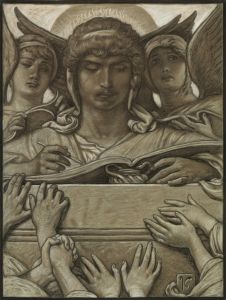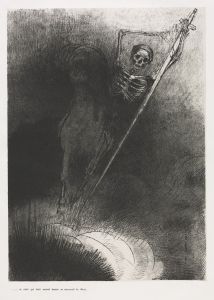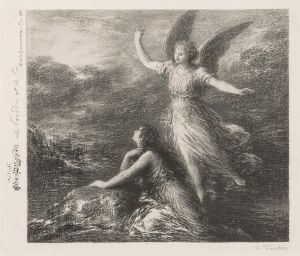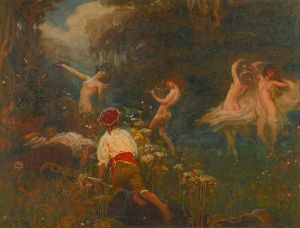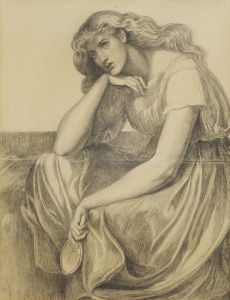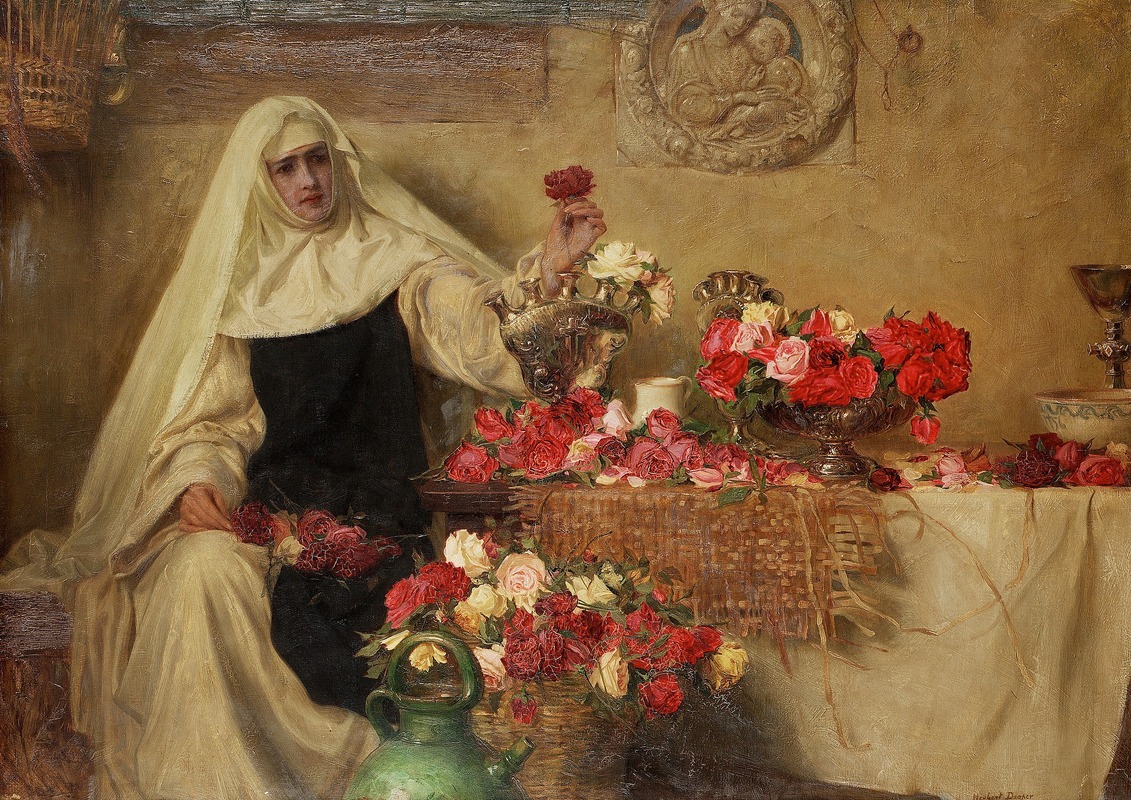
For Saint Dorothea’s Day 1899
A hand-painted replica of Herbert James Draper’s masterpiece For Saint Dorothea’s Day 1899, meticulously crafted by professional artists to capture the true essence of the original. Each piece is created with museum-quality canvas and rare mineral pigments, carefully painted by experienced artists with delicate brushstrokes and rich, layered colors to perfectly recreate the texture of the original artwork. Unlike machine-printed reproductions, this hand-painted version brings the painting to life, infused with the artist’s emotions and skill in every stroke. Whether for personal collection or home decoration, it instantly elevates the artistic atmosphere of any space.
"For Saint Dorothea’s Day" is a painting created by the British artist Herbert James Draper in 1899. Draper was known for his works that often depicted mythological themes and classical subjects, and he was part of the late Victorian era of British art. His style is characterized by a romantic and often idealized portrayal of figures, with a strong emphasis on composition and color.
The painting "For Saint Dorothea’s Day" is one of Draper's lesser-known works, and there is limited information available about its specific details or the context of its creation. However, it is consistent with Draper's broader body of work, which frequently explored themes from mythology, literature, and history, often focusing on the human figure, particularly female figures, in a manner that highlights their beauty and grace.
Saint Dorothea, to whom the painting's title refers, is a Christian martyr who is venerated in both the Roman Catholic and Eastern Orthodox traditions. According to Christian legend, she was a young woman from Caesarea in Cappadocia who was martyred during the Diocletianic Persecution in the early 4th century. Her feast day is celebrated on February 6th. The story of Saint Dorothea includes a miraculous event where, after her execution, she sent a basket of roses and apples from the garden of paradise to a skeptical Roman lawyer named Theophilus, leading to his conversion to Christianity.
While the painting's title suggests a connection to Saint Dorothea, without more detailed information or visual analysis, it is difficult to ascertain how Draper interpreted or depicted this connection in the artwork. Draper's works often employed symbolism and allegory, so it is possible that the painting includes elements that reference the saint's story or her attributes, such as roses or a basket of fruit, which are commonly associated with her iconography.
Herbert James Draper's career was marked by a successful period during the late 19th and early 20th centuries, where he gained recognition for his skillful use of color and his ability to convey emotion and narrative through his paintings. He was educated at the Royal Academy of Arts in London and spent time studying in Paris, which influenced his artistic development. Draper's work was well-received during his lifetime, and he exhibited regularly at the Royal Academy and other prestigious venues.
Despite the lack of specific information about "For Saint Dorothea’s Day," Draper's oeuvre remains an important part of the study of Victorian art, offering insights into the cultural and artistic trends of the period. His paintings continue to be appreciated for their technical proficiency and their ability to evoke a sense of timeless beauty and mythological wonder.
In summary, while detailed information about "For Saint Dorothea’s Day" is scarce, it can be appreciated within the broader context of Herbert James Draper's artistic legacy and his contributions to the art of the late Victorian era.





